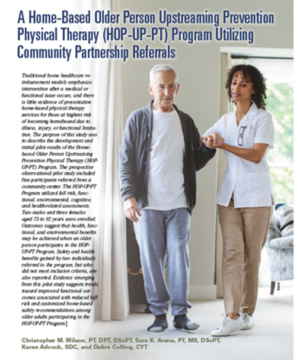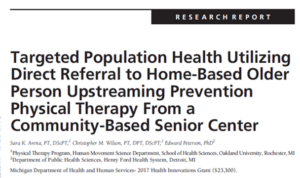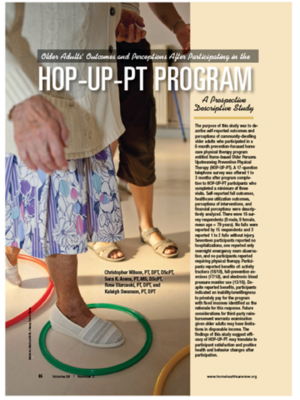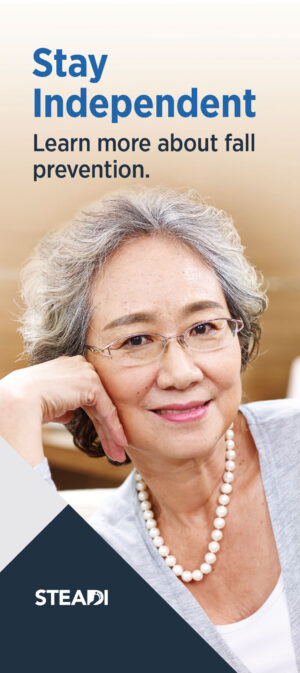
The purpose of this study was to describe the development and initial pilot results of the HOP-UP-PT Program, a hybrid physical therapy care model (in-person and telerehabilitation visits). The prospective observational pilot study included five participants referred from a community center. The HOP-UP-PT Program utilized fall risk, functional, environmental, cognitive, and health-related assessments. Five older adults aged 73 to 92 years were enrolled. Outcomes suggest that health, functional, and environmental benefits may be achieved when an older person participates in the HOP-UP-PT Program. Evidence emerging from this pilot study suggests trends toward improved functional outcomes associated with reduced fall risk and customized home-based safety recommendations among older adults participating in the HOP-UP-PT Program.









